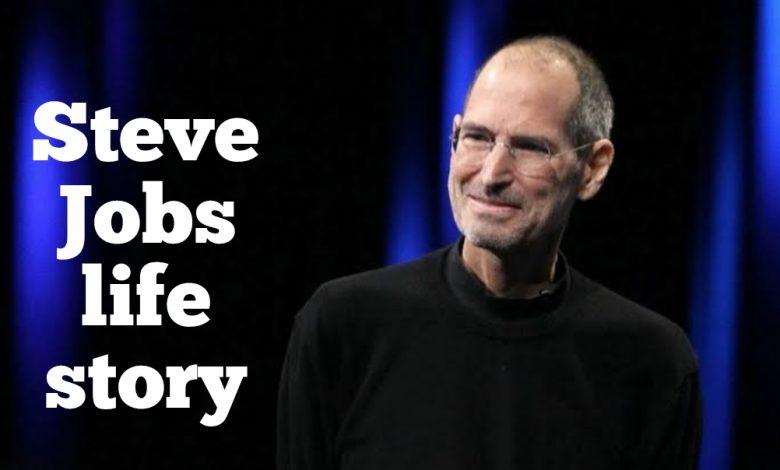
Early Life and Adoption
Steve Jobs was born on February 24, 1955, in San Francisco, California. His biological parents, Joanne Schieble and Abdulfattah Jandali, were unmarried college students who placed him for adoption. Paul and Clara Jobs adopted the baby, naming him Steven Paul Jobs.
Growing up in Mountain View, California, young Steve was bright but often found traditional schooling boring. His adoptive father, a mechanic, taught him how to take apart and rebuild electronics, sparking his interest in technology from an early age.
College Years and India
In 1972, Jobs enrolled at Reed College in Portland, Oregon. However, he dropped out after one semester, choosing instead to audit classes that interested him, including a calligraphy course that would later influence Apple’s focus on typography and design.
In 1974, Jobs traveled to India seeking spiritual enlightenment. This trip had a profound impact on his philosophy and design aesthetics. Upon his return to the US, he dabbled in Buddhism and experimented with psychedelic drugs, experiences he later credited with shaping his creative vision.
The Birth of Apple
In 1976, Jobs and his friend Steve Wozniak founded Apple Computer in Jobs’ garage. Their first product, the Apple I, was a computer single-board hand-built by Wozniak. It marked the beginning of the personal computer revolution.
The company’s big break came with the Apple II, introduced in 1977. It was one of the first highly successful mass-produced microcomputers, featuring color graphics and an open architecture. This success made Apple a leader in the personal computer industry.
Macintosh and Leaving Apple
In 1984, Apple launched the Macintosh, the first personal computer to feature a graphical user interface (GUI) and a mouse. Despite its groundbreaking design, initial sales were disappointing. Tensions grew between Jobs and Apple’s board of directors, leading to his forced resignation in 1985.
NeXT and Pixar
After leaving Apple, Jobs founded NeXT Computer. While NeXT never achieved widespread success, its advanced operating system would later become the foundation for Apple’s macOS.
In 1986, Jobs acquired the computer graphics division of Lucasfilm, which became Pixar Animation Studios. Under his guidance, Pixar produced groundbreaking animated films, starting with “Toy Story” in 1995. Pixar’s success in digital animation revolutionized the film industry.
Return to Apple
In 1997, Apple acquired NeXT, bringing Jobs back to the company he co-founded. He soon became interim CEO, and then permanent CEO in 2000. Jobs led Apple through a remarkable period of innovation and growth, introducing a series of revolutionary products:
- iMac (1998): An all-in-one computer that emphasized design and ease of use.
- iPod (2001): A portable music player that transformed the music industry.
- iTunes Store (2003): A digital media store that changed how people buy and consume music.
- iPhone (2007): A smartphone that redefined mobile computing and communication.
- App Store (2008): A platform for mobile applications that created a new industry.
- iPad (2010): A tablet computer that established a new product category.
Leadership Style and Innovation Philosophy
Jobs was known for his perfectionism, attention to detail, and ability to anticipate and shape consumer needs. His leadership style was often described as demanding and intense. He believed in pushing people beyond their comfort zones to achieve greatness.
Jobs’ approach to innovation was summed up in his famous quote: “People don’t know what they want until you show it to them.” He focused on creating products that were not just technologically advanced but also beautifully designed and user-friendly.
Personal Life
Jobs married Laurene Powell in 1991, and they had three children together. He also had a daughter, Lisa, from a previous relationship. Initially, Jobs denied paternity of Lisa, but later acknowledged her and developed a relationship with her.
Throughout his life, Jobs maintained a strong interest in spirituality, particularly Zen Buddhism. This influence was often reflected in the minimalist design of Apple products.
Health Struggles and Final Years
In 2003, Jobs was diagnosed with pancreatic cancer. He initially resisted medical intervention, preferring alternative treatments. He underwent surgery in 2004 and a liver transplant in 2009.
Despite his health issues, Jobs continued to lead Apple, introducing new products and overseeing the company’s rapid growth. However, his health continued to decline, and he stepped down as CEO in August 2011, handing the reins to Tim Cook.
Legacy and Impact
Steve Jobs passed away on October 5, 2011, at the age of 56. His death was mourned worldwide, with many recognizing him as one of the greatest innovators of our time.
Jobs’ legacy extends far beyond the products he created. He revolutionized multiple industries, including personal computing, mobile phones, digital publishing, and animated movies. His emphasis on the intersection of technology and liberal arts set Apple apart and influenced design thinking across industries.
Today, Apple continues to be one of the world’s most valuable companies, a testament to Jobs’ vision and the foundation he built. His life story, from college dropout to tech visionary, continues to inspire entrepreneurs and innovators around the world.
In Conclusion
Steve Jobs was a complex figure who transformed the way we interact with technology. His relentless pursuit of perfection, his ability to envision products people didn’t even know they wanted, and his skill in presenting these innovations to the world made him one of the most influential business leaders of the 20th and early 21st centuries. While his management style was often controversial, his impact on technology, design, and innovation is undeniable. Steve Jobs didn’t just create products; he changed the way we live, work, and communicate.
